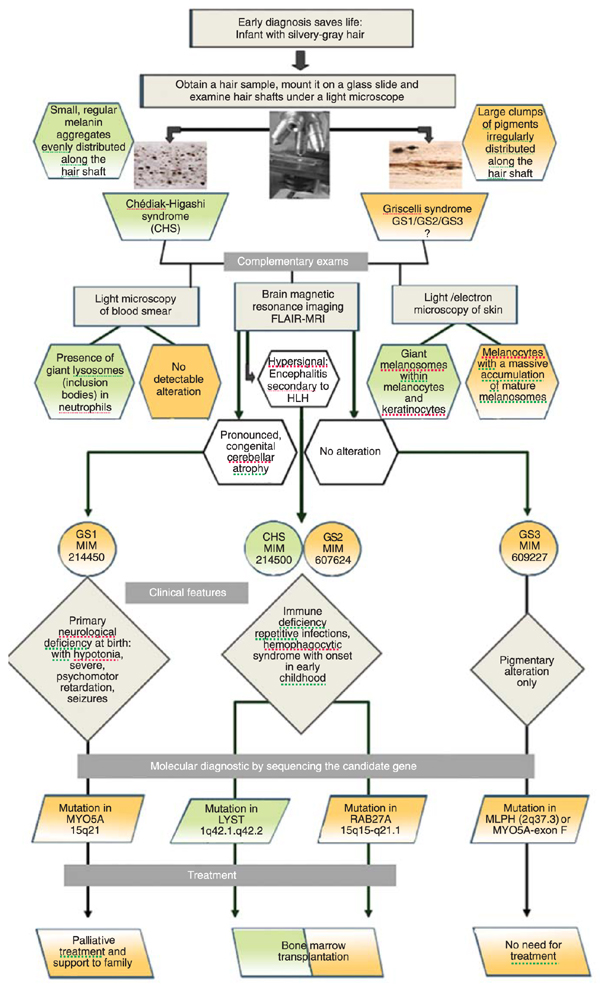Griscelli syndrome (GS) is a rare autosomal recessive disorder caused by mutation in the MYO5A (GS1, Elejalde), RAB27A (GS2) or MLPH (GS3) genes. Typical features of all three subtypes of this disease include pigmentary dilution of the hair and skin and silvery-gray hair. Whereas the GS3 phenotype is restricted to the pigmentation dysfunction, GS1 patients also show primary neurological impairment and GS2 patients have severe immunological deficiencies that lead to recurrent infections and hemophagocytic syndrome. We report here the diagnosis of GS2 in 3-year-old twin siblings, with silvery-gray hair, immunodeficiency, hepatosplenomegaly and secondary severe neurological symptoms that culminated in multiple organ failure and death. Light microscopy examination of the hair showed large, irregular clumps of pigments characteristic of GS. A homozygous nonsense mutation, C-T transition (c.550C>T), in the coding region of the RAB27A gene, which leads to a premature stop codon and prediction of a truncated protein (R184X), was found. In patient mononuclear cells, RAB27A mRNA levels were the same as in cells from the parents, but no protein was detected. In addition to the case report, we also present an updated summary on the exon/intron organization of the human RAB27A gene, a literature review of GS2 cases, and a complete list of the human mutations currently reported in this gene. Finally, we propose a flow chart to guide the early diagnosis of the GS subtypes and Chédiak-Higashi syndrome.
Griscelli syndrome; RAB27A; Hemophagocytic lymphohistiocytosis; Cerebellitis; Immunodeficiency





